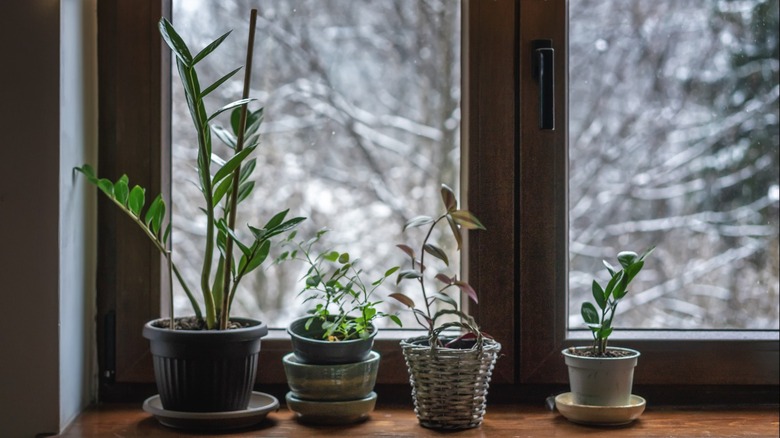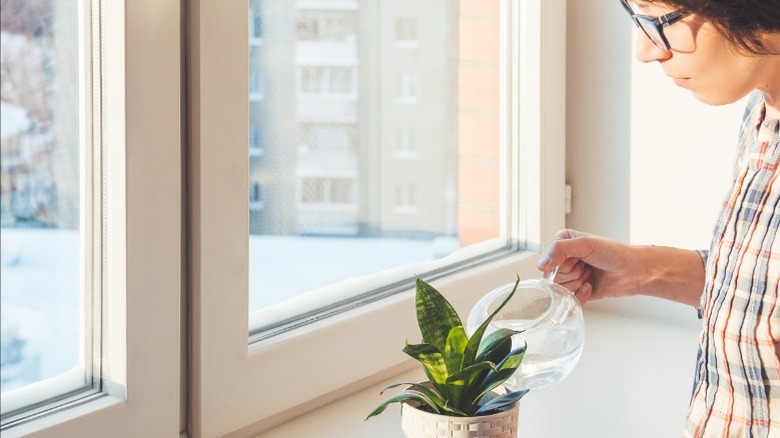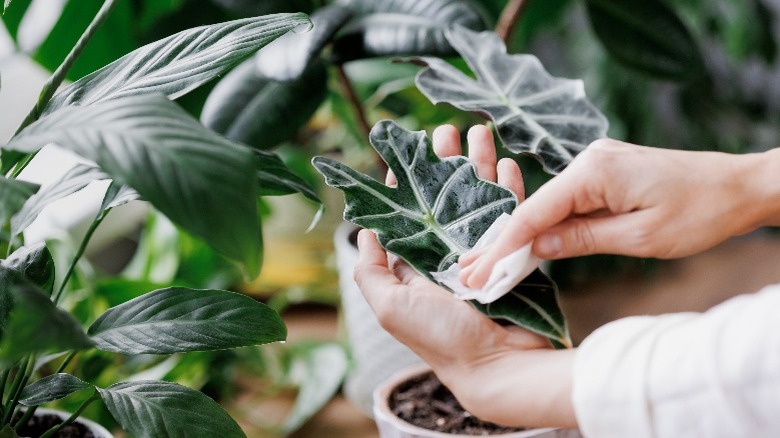How To Water Your Houseplants The Right Way During Winter
Winter is often seen as a downtime in the gardening world, as most plants enter a dormant phase during this season, whether indoors or outdoors. While indoor houseplants are shielded from the harsh outdoor weather, they still experience subtle changes in their growing conditions during winter. This means you'll need to adjust how you care for them.
If you're wondering about watering your houseplants in the winter, the quick answer is yes, you should. However, it's not just about keeping up with a regular watering schedule. There are several factors to consider, such as the appropriate time, frequency, and water temperature.
The specific type of plant, the moisture level of the soil, and the ambient temperature in your home all play crucial roles in determining the proper watering regimen. So, while your plants may be resting, your plant care routine should remain active, albeit with some winter-specific modifications.
Things to consider when watering plants during winter
Even when dormant, watering is essential for keeping houseplants thriving in winter. Watering mid-day is ideal, as it allows plants to absorb water before the colder night temperatures. Rather than sticking to your usual watering schedule, it's better to assess the moisture level of the potting mix by gently pressing a finger an inchinto the soil. If it feels damp, don't water it; only water the plant if the soil is dry.
While most people keep their homes reasonably warm, it's worth noting that you should only water your plants when the temperature is above 40 degrees Fahrenheit, as temperatures below this can be too cold and potentially harmful. Be cautious about the water temperature; use warm or room temperature water, around 68 degrees Fahrenheit, to water your plants. Water that is too hot can harm the beneficial microorganisms in the soil and potentially damage the roots. Similarly, cold water might shock the plant's roots, leading to harm.
The type of plant also determines their watering needs. Many tropical plants, for instance, thrive with more moisture and can benefit from regular misting, but cold-tolerant tropical plants may not need as much moisture during their dormant season. Winter-flowering plants, such as poinsettias, should be watered whenever their compost feels dry to the touch. Drought-tolerant cacti and succulents only need to be watered once every four to six weeks.
Humidity also helps houseplants thrive in winter
Aside from watering plants during winter, there are other things you must do to protect plants from the cold winter. First off, it's essential to make sure they get enough sunlight. Move the plants closer to windows and rotate pots to ensure all sides get enough sunlight. Indoor plants also tend to accumulate dust on their leaves, making photosynthesis much harder for them. That is, it can reduce the amount of light they absorb and their ability to manufacture food. Thus, it's important to regularly wipe the leaves with a damp cloth.
Move your houseplants away from areas where temperatures fluctuate dramatically. In the winter, plants kept near fireplaces, radiators, or cold and drafty windows may suffer.
The air also tends to be drier during winter, but plants tend to thrive at humidity levels of around 40% to 50%. One way to keep it humid is to cluster plants together in groups. You can also move them near bathrooms and kitchens to absorb moisture whenever someone cooks and showers. Covering the soil with mulch can also be helpful. The mulch acts as a blanket over the soil, helping it retain moisture longer and preventing the topsoil from freezing.


